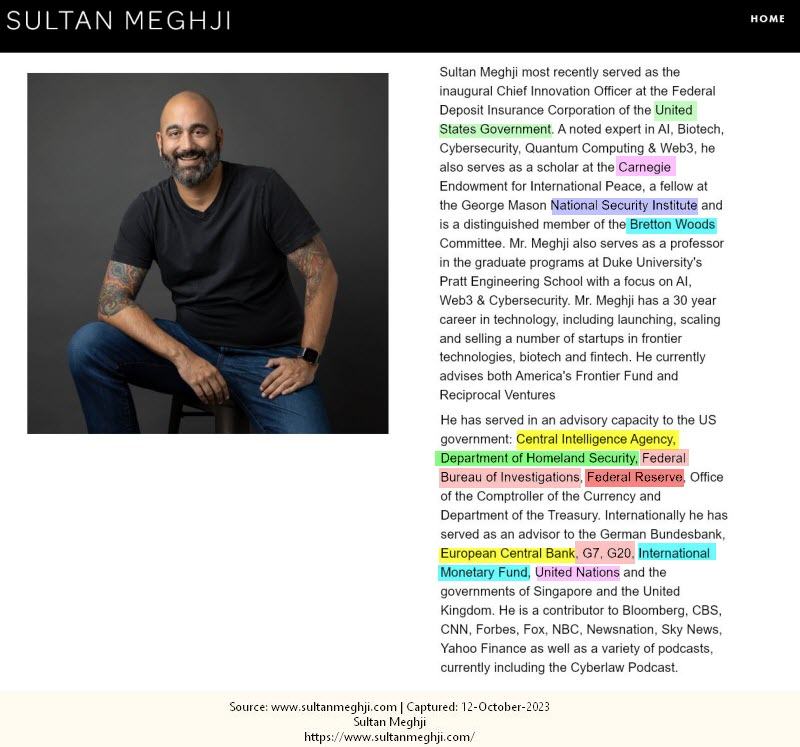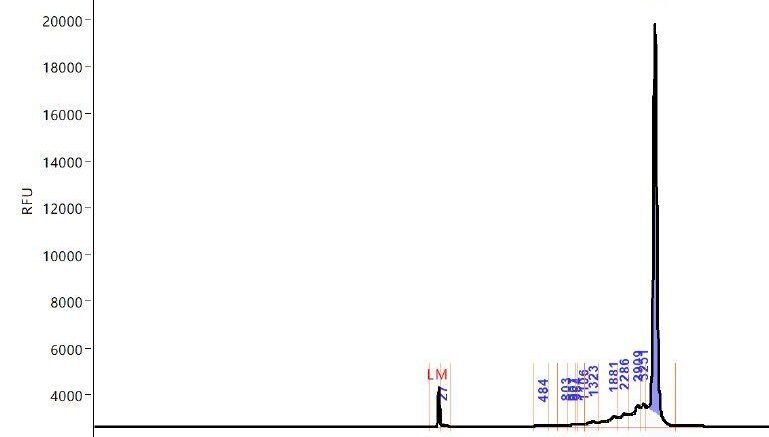Aussies to Merge Brain Cells with AI
“…merges the fields of artificial intelligence and synthetic biology to create programmable biological computing platforms,” ~ Monash University Professor Adeel Razi
Aussie Scientists to combine AI with human brain cells
Mirrors: Rumble-Mirror | Telegram-Mirror
Duke University professor Sultan Meghji joined ‘Fox & Friends Weekend’ to discuss artificial intelligence and scientists’ latest efforts to combine the technology with brain cells. (03) (04) (05) (06)
Scientists in Australia have received a massive military grant (from Australia’s Office of National Intelligence) to fuse human brain cells with AI. (07)
One scientist involved saying the project, quote, “merges the fields of artificial intelligence and synthetic biology to create programmable, biological computing platforms.” (08) (09) (10)
Sultan Meghji is an AI expert and professor at Duke University. He joins me now.
Ummmmmmmmmmmmmmmmmmmmmmmmmmmmm… first, let’s check out his website… ?
Advisor to US gov, CIA, Homeland Security, FBI, Federal Reserve, Dept of Treasury, advisor to European Central Bank, G7, G20, IMF, United Nations… fellow at the National Security Institute, “distinguished member of the Bretton Woods Committee”, etc.. so yeah, take this interview as a propaganda piece…(possibly to make it seem like they aren’t as advanced as they already have been for decades… it’s what I would do if I were an evil empire…)
Alrighty then.. moving on… (wtf)…
Listen, this is incredibly important work, I’m sure. It’s also scary to someone like me. I did not know you could grow brain cells and they apparently could play a ping pong computer game.
Wait… what?
Hmm.. they apparently tortured the cells to get them to play Ping Pong…
While introducing DishBrain last year, the researchers described a semi-biological processing unit, architected from a mix of human and mice brain cells grown into control electrodes. These electrodes served as a sort of BCI (Brain-Computer Interface), allowing scientists to send control signals and to read the biological “protobrain” activity. Interestingly (your adjective may vary), DishBrain demonstrated something akin to sentience (well, more like basic survival skills, or the biological imperative of minimizing negative feedback) within 5 minutes of it being turned on: that was the amount of time it needed to “learn” how to play Pong.
The way they managed to “train” the brain was nothing short of ingenious: the ball’s movement was transmitted to the cells through the electrodes, with the electrical stimulation of DishBrain’s cells impacting different areas mapped against the location of the ball. Then, DishBrain was given control of the paddles and the ability to move them left and right.
Because biological systems tend towards the lowest energy expenditure possible (or, at least, to avoid costly or negative experiences that subtract from its energy reserves — and thus its survivability), DishBrain was set up for a simple reward system that exploited this: if the paddle intercepted the ball, the electrodes in BrainDish would give it a “positive,” predictable, one-second-length electrical stimulus. But whenever the paddles missed the ball, DishBrain received an unpredictable burst of electricity that lasted up to four seconds. Sentience, in this case, was achieved via survivability: it takes more energy to cope with an unpredictable four-second burst than it does for a predictable, one-second one. So DishBain increased its survivability by actively maximizing the number of times the paddles hit the ball.
So explain to me what this is.
Well, it’s an interesting area, right? And it’s something that we’ve been working on for decades now. For so many years, we’ve been trying to get artificial intelligence to mimic the human brain, which is the best computer out there, and this is a great next step. But what really it’s trying to do is two things.
One is to help us make better hardware so that the computers that are running our AI systems today are faster, more reliable, easier, cheaper, things like that, and then the second is to actually make the AI systems behave more like humans to have smarter intelligence. Because we’re really at this issue where AI systems don’t really know how to learn as well as a human brain does.
You know, I want to stay on this for a second. These programmable brain cells, are they carbon-based biological matter? Is that really what this is?
Yeah, well, you’ve got a couple of different versions of it. But yeah, in some cases, you have a model. So they have a computer chip that mimics how a human brain operates. So that’s kind of the more silicon side of things, and then in some cases, you have actual biological cells that look not too dissimilar from a human or a pig sometimes they use, that are just there to receive electrical signals just like a human brain cell does, and then the electrical signal that comes out controls other computers.
Well, we had a, you know, we’ve shown all morning this list of companies that are saying they’re doing this kind of creed to say we’re going to do a self-check on AI, Amazon, Google, Meta, Microsoft, OpenAI.
What are the kind of moral problems here? If you take this a step further and talk about growing biological matter that could be used as a brain for a computer and now you have these companies kind of saying we’re going to do a safety code or could we get into a place like where we were with STEM cells a few decades ago?
Well, it’s an interesting parallel because, you know, the regulatory system here in the United States hasn’t been updated in a while to deal with artificial intelligence, right? And that’s why you see these seven companies kind of just agreeing with whatever the Biden administration wants to say. But, you know, STEM cells actually have regulations around it. There are a lot of rules about what you can do at biological cells. So it changes the game there.
Very interesting. I want to say scary, but maybe exciting. Who knows? Thank you for joining us.
See also: Australian DishBrain researchers to merge AI with human brain cells (12)
Posts tagged: Synthetic Biology
- How We Win | Legal & Mankind Remedy
- Aussies to Merge Brain Cells with AI
- WEF Parody vs Real Compilation Vids
- Pfizer switched templates that could cause permanent genome changes to those injected & their offspring…[Senate Hearing]
- Sentient World – Militarizing our Bodies
- The Great Awakening [Documentary]
- [chatGPT] NBIC (Nano-Bio-Info-Cogno)
- Bioengineered Clathrin Quantum Cognitive Sensors (ExQor / ExQori∆ / Xenqai)
- NBIC (Converging Humans with Tech) Links
- David Rockefeller – A Brief Timeline
- Hackable Humans [Short Compilation Video]
- The Sequel to the Fall of the Cabal [Documentary]
- 5G-Covid-19 Paper
- [Legal] Bioweapon evidence [May 23, 2023]
- Must watch: Sci-Fi Short Film “Nano” | DUST
- [2015] Self-Assembling Nano, Smart Dust, Geo-Engineering since 1945
- [Part III] Mass-mind-control (2000-2022)
- Covid Vaccines deliver 5G Nanotechnology (La Quinta Columna)
- Dr. Alphonzo Monzo – Detox Nanotech
- Fundamentals of Molecular Nano-Communication Networks [Lecture]

Site Notifications/Chat:
- Telegram Post Updates @JourneyToABetterLife (channel)
- Telegram Chatroom @JourneyBetterLifeCHAT (say hi / share info)
- Gettr Post Updates @chesaus (like fakebook)
Videos:
References





![[Must See!] Aussie GP – Dr Melissa McCann – Stands up [Part I]](https://pennybutler.com/wp-content/uploads/2023/06/Dr._Melissa_McCann_Speech.jpg)

![Ballarat Candidates Federal Election [May 2022]](https://pennybutler.com/wp-content/uploads/2022/05/rubbish-labourliberalgreens.jpg)